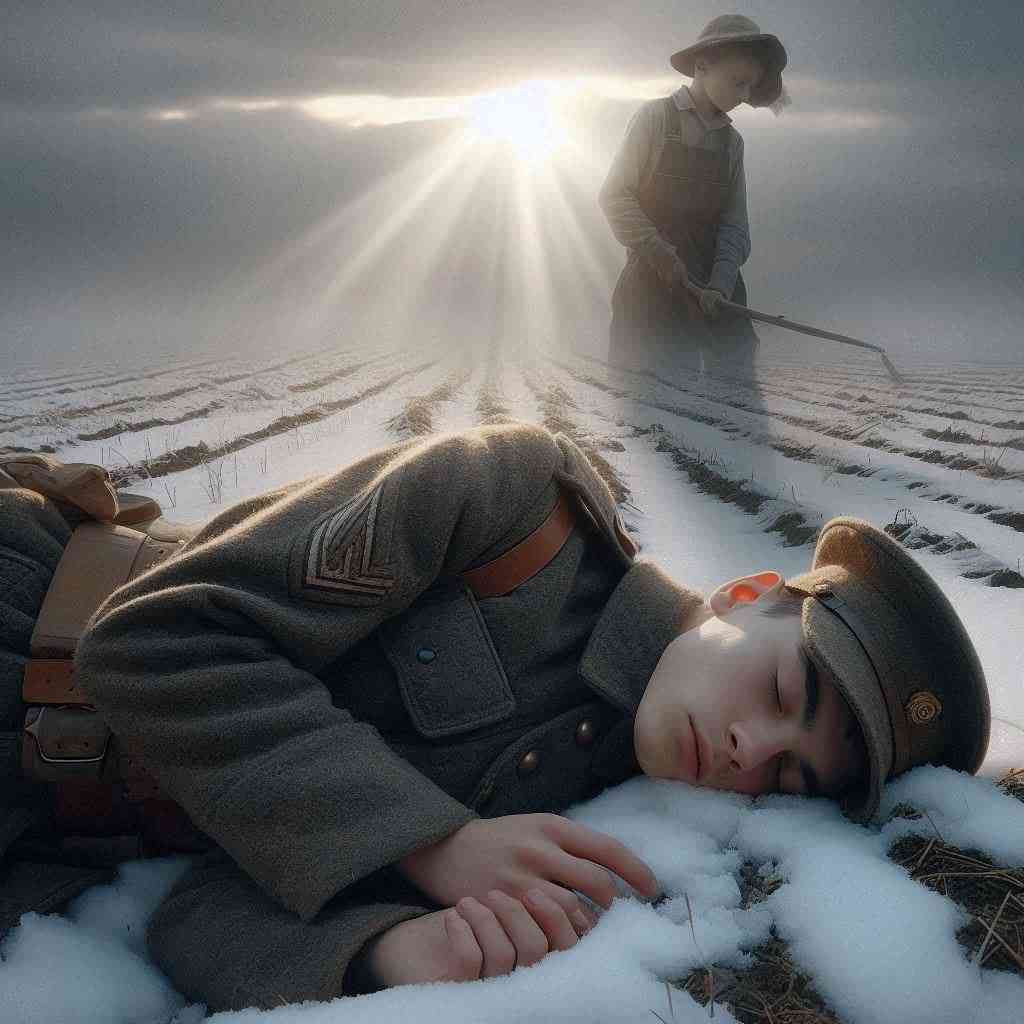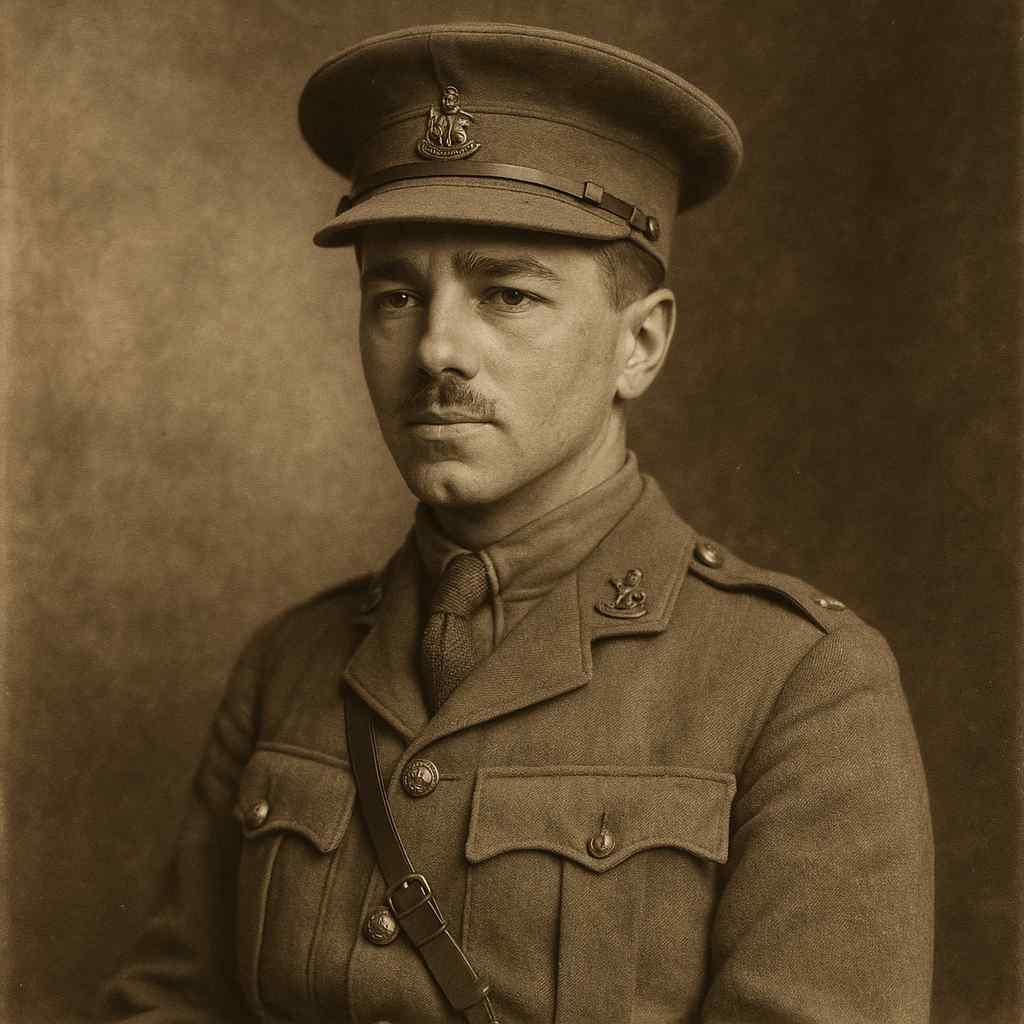Futility
Wilfred Owen
1893 to 1918

Move him into the sun—
Gently its touch awoke him once,
At home, whispering of fields half-sown.
Always it woke him, even in France,
Until this morning and this snow.
If anything might rouse him now
The kind old sun will know.
Think how it wakes the seeds—
Woke once the clays of a cold star.
Are limbs, so dear-achieved, are sides
Full-nerved, still warm, too hard to stir?
Was it for this the clay grew tall?
—O what made fatuous sunbeams toil
To break earth's sleep at all?
Wilfred Owen's Futility
Introduction
Wilfred Owen's poem "Futility" stands as a poignant testament to the devastating impact of World War I on the human psyche and the fragility of life in the face of overwhelming destruction. Composed in 1918, mere months before Owen's own untimely death on the battlefield, this brief yet profound work encapsulates the poet's grappling with the senselessness of war and the existential questions it raises. Through a masterful interplay of imagery, tone, and thematic depth, Owen crafts a meditation on mortality that resonates far beyond its immediate context, inviting readers to contemplate the very nature of existence and the purpose of life itself.
Analysis of Form and Structure
The poem's structure, consisting of two stanzas of seven lines each, mirrors the duality of its thematic concerns. The first stanza focuses on the immediate and personal, describing the attempt to revive a fallen soldier, while the second stanza broadens the scope to encompass universal questions about life and creation. This structural division underscores the poem's movement from the particular to the general, from the individual tragedy to the cosmic inquiry.
Owen employs a subtle rhyme scheme (ABCBCAA in both stanzas) that lends a musical quality to the verse without overpowering its somber tone. The use of half-rhymes (e.g., "sun/sown" and "star/stir") creates a sense of incompleteness or discord, reflecting the disharmony of war and the speaker's internal struggle.
The rhythm of the poem is predominantly iambic, with variations that serve to emphasize key words and phrases. For instance, the opening line "Move him into the sun—" begins with a trochaic foot, immediately drawing attention to the urgent action being taken. This metrical flexibility allows Owen to maintain a conversational tone while infusing the verse with emotional intensity.
Imagery and Symbolism
Central to "Futility" is the symbol of the sun, which serves multiple functions throughout the poem. Initially presented as a life-giving force, the sun is personified as a "kind old" entity with the power to awaken and nurture. This imagery evokes memories of peaceful, pastoral scenes—"fields half-sown" and the gentle awakening of seeds. However, as the poem progresses, the sun's power is called into question, ultimately becoming a symbol of futile effort and misplaced hope.
The juxtaposition of warmth and cold runs throughout the poem, embodying the tension between life and death. The sun's warmth is contrasted with the "snow" and the "cold star," while the soldier's body is described as "still warm," yet unresponsive. This thermal imagery underscores the precarious nature of life and the fine line between vitality and mortality.
Owen's use of tactile imagery—"Gently its touch," "limbs... Full-nerved"—serves to emphasize the physicality of the soldier's body, making the reality of death all the more palpable. The poet's focus on the corporeality of the fallen soldier forces readers to confront the brutal consequences of war on the human form.
Thematic Exploration
At its core, "Futility" is an exploration of the seeming meaninglessness of human existence in the face of death, particularly the senseless deaths caused by war. The poem's title itself sets the tone for this philosophical inquiry, suggesting from the outset that all efforts—whether to save a single life or to understand the purpose of existence—may ultimately be in vain.
The first stanza presents a poignant scene of attempted revival, with the speaker desperately hoping that the sun's warmth might awaken the fallen soldier as it once did in peacetime. This futile effort to deny death speaks to the human instinct to preserve life at all costs, even when faced with the inevitable. The mention of France situates the poem firmly within the context of World War I, reminding readers of the countless lives lost in that conflict.
As the poem transitions to its second stanza, Owen broadens his scope to question the very origins of life. The reference to the sun waking "the clays of a cold star" alludes to theories of cosmic and biological evolution, suggesting that all of life's development has led to this moment of senseless death. The rhetorical question "Was it for this the clay grew tall?" encapsulates the poet's anguish and disillusionment, implying that the entire process of human evolution and individual growth seems futile in the face of war's destructive power.
The final lines of the poem, with their despairing tone and cosmic scope, represent a climax of Owen's existential questioning. By anthropomorphizing the sunbeams as "fatuous" and their efforts as "toil," Owen implies a universe devoid of purpose or benevolent design. The image of breaking "earth's sleep" suggests that consciousness itself—the awakening of life from the inanimate—may be a curse rather than a blessing.
Owen's Contextual Influence
To fully appreciate "Futility," one must consider Owen's experiences as a soldier and his broader body of work. Known for his unflinching portrayal of the horrors of trench warfare, Owen's poetry often serves as a scathing indictment of the romanticized notions of war prevalent in English society at the time. "Futility" represents a more subdued, philosophical approach to this critique, eschewing graphic depictions of violence in favor of a quiet, devastating contemplation of war's ultimate meaninglessness.
The poem's themes align closely with the broader literary movement of modernism, which grappled with the disillusionment and fragmentation of society in the wake of World War I. Owen's questioning of traditional values and his exploration of existential despair place him firmly within this tradition, alongside contemporaries such as T.S. Eliot and Ezra Pound.
Language and Tone
Owen's mastery of language is evident in the delicate balance he strikes between tenderness and despair. The gentle language used to describe the sun and the act of moving the soldier—"Gently its touch," "kind old sun"—contrasts sharply with the stark reality of death, creating a poignant irony that underscores the poem's emotional impact.
The use of questions in the second stanza—"Are limbs, so dear-achieved, are sides / Full-nerved, still warm, too hard to stir?"—invites the reader into the speaker's thought process, fostering a sense of shared bewilderment and grief. The final question, which closes the poem, leaves readers with a profound sense of unresolution, mirroring the speaker's own grappling with the inexplicability of death and the apparent absurdity of existence.
Conclusion
"Futility" stands as a testament to Wilfred Owen's poetic genius and his ability to distill the immense tragedy of war into a deeply personal and universally resonant work of art. Through its careful construction, evocative imagery, and profound thematic exploration, the poem transcends its immediate historical context to pose timeless questions about the nature of existence, the value of human life, and the search for meaning in a world marked by suffering and loss.
Owen's poem challenges readers to confront the harsh realities of mortality and the potential meaninglessness of human endeavor, while simultaneously demonstrating the power of art to grapple with these weighty philosophical issues. In its brief fourteen lines, "Futility" encapsulates the disillusionment of a generation scarred by war, offering a poignant meditation on life, death, and the human condition that continues to resonate with readers more than a century after its composition.
As we continue to face global conflicts and grapple with questions of purpose and meaning in the 21st century, Owen's words serve as a stark reminder of the cost of war and the enduring need for empathy, understanding, and a critical examination of the values that drive human societies. "Futility" thus remains not only a masterpiece of war poetry but a timeless exploration of what it means to be human in a world that often seems indifferent to our existence.
This text was generated by AI and is for reference only. Learn more
Want to join the discussion? Reopen or create a unique username to comment. No personal details required!



Comments
No comments yet. Be the first to comment!